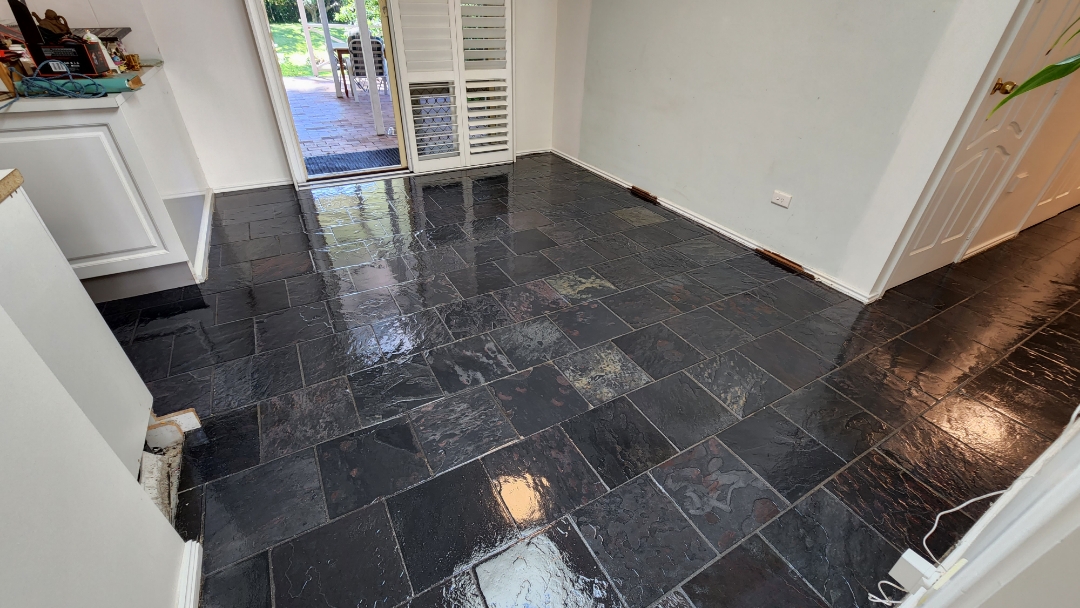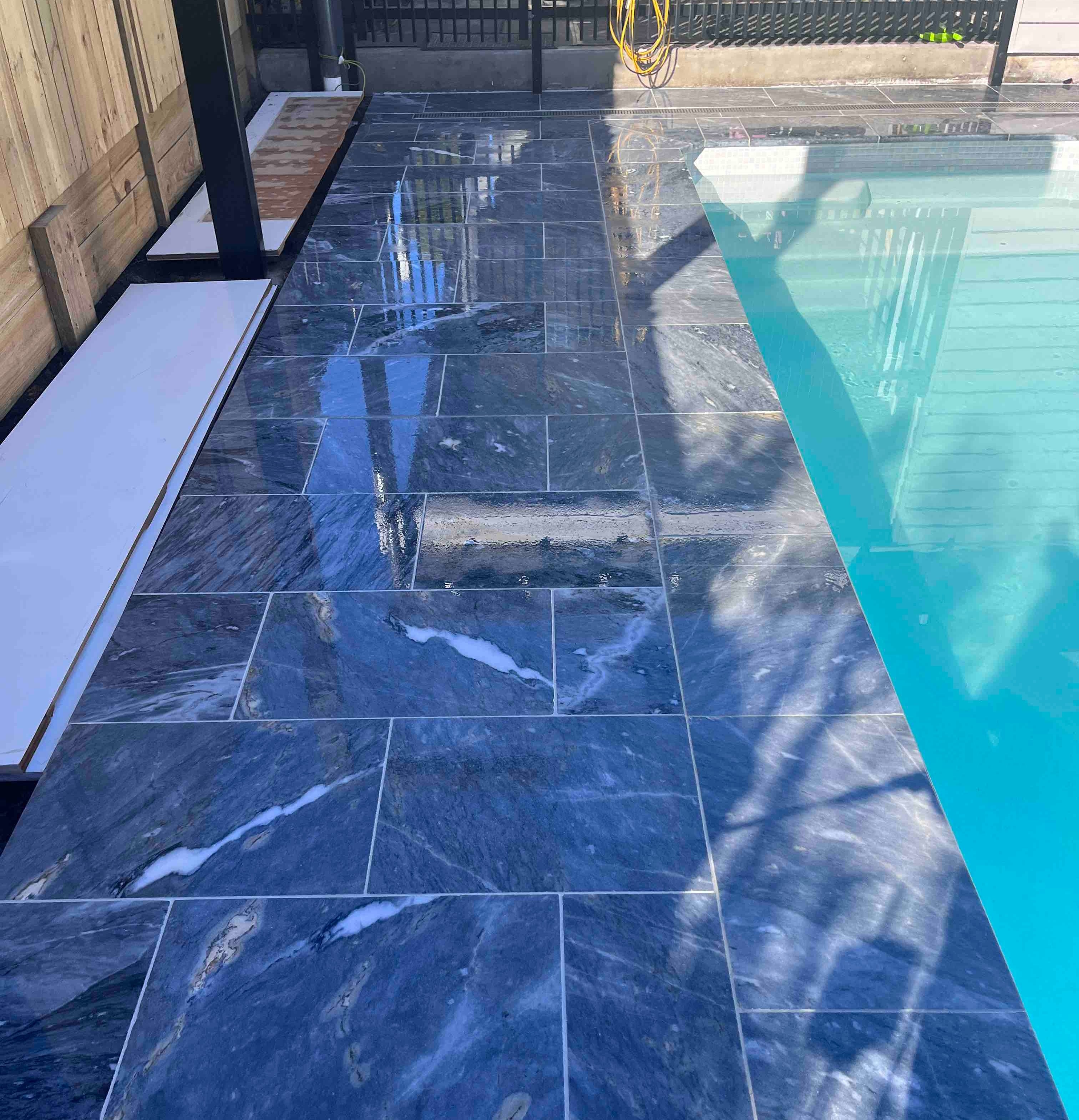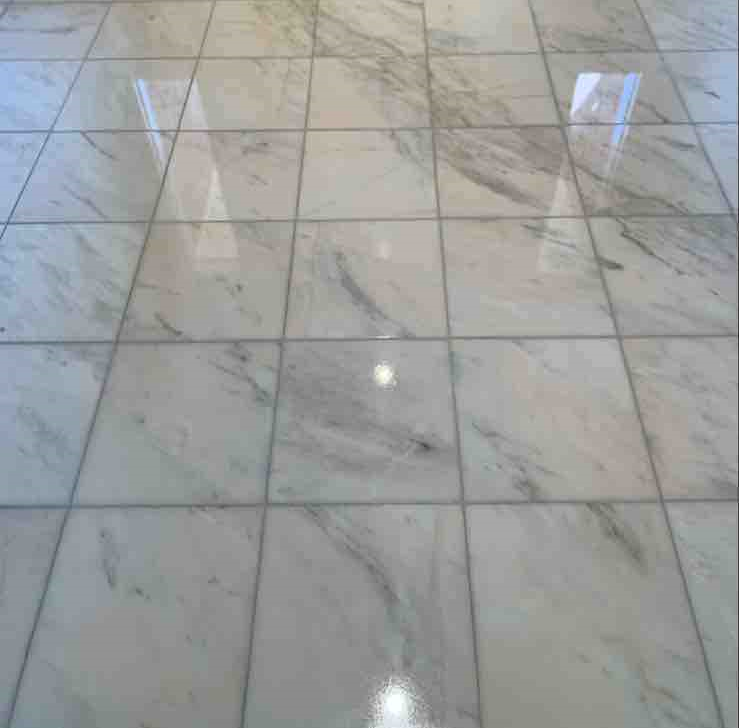- travertine Sealer
- Penetrating travertine Sealer
- Outdoor travertine Sealer
- Non Slip Sealer for travertine
- Long Lasting travertine Sealer
- Impregnating travertine Sealer
- Breathable travertine Sealer
- Best travertine Sealer
- Sealing travertine Pavers
- Sealing travertine around Pool
- Sealing travertine Kitchens
- Sealing travertine Bathrooms
- Sealing travertine Showers
- Sealing travertine Benchtops
- Protecting against Acid Attack
- Protecting against Salt Attack
- Protecting against Efflorescence
- Why travertine?
- What is travertine?
- What is Efflorescence?
- Maintenance & Care
- travertine Stains Removal
- Efflorescence Removal
- travertine Available Finishes
Frequently Asked Questions
+
How do I remove acidic (etch) marks from my travertine tiles?
To remove etch marks, buffing using a series of sanding pads will be necessary. Once you have removed the stains, make sure to seal your travertine with an impregnating sealer.
+
Can I use any cleaning solution on travertine?
No, you should definitely not use any cleaning solution for travertine. Travertine is an acid-sensitive stone that requires specific pH-neutral travertine cleaning solutions. Always test cleaning products on a small, inconspicuous area first.
+
Are fumes from sealers dangerous to inhale during application on travertine?
Yes, it is always safer to use water-based products, especially when working indoors and in poorly ventilated areas. Solvent-based sealers are highly flammable, and the fumes can pose serious health and safety risks to both individuals and property.
+
How long will a travertine sealer last?
The life expectancy of a sealer depends partly on exposure conditions and how well the travertine surface is maintained. In general, you tend to get what you pay for with sealers. Penetrating sealers deliver the best long-term performance and can last for up to 15 years before the need for reapplication. Most topical sealers will need to be stripped and resealed far more regularly.
+
What is a sealer for travertine?
A sealer is a coating applied to travertine and other materials to prevent contaminants from penetrating and causing deterioration. Unsealed travertine can be instantly stained and permanently damaged. There are two types of travertine sealer: penetrating and topical.
+
How do impregnators work on travertine?
Impregnators, also known as penetrating sealers, work by penetrating below the surface of travertine and protecting it from within. Unlike topical sealers, there is no visible coating or film formed on the surface. Impregnators reduce the pore size of the stone by filling these pores with a resin. The resins are small enough not to block the pores, allowing the travertine to still allow vapor to pass through while providing protection against stains and deterioration.
+
Why is breathability important for travertine?
Breathability, or the ability for travertine to release vapor, is crucial for its health and longevity. If the pores of travertine are completely blocked, vapor will condense within the stone, leading to saturation with moisture. Excess moisture can result in various issues, including efflorescence, where soluble salts are deposited on the surface. If these salts cannot escape to the surface, they will accumulate in the pores of the travertine, causing deterioration over time. Therefore, allowing travertine to breathe is essential for preventing moisture-related problems and preserving its integrity.
+
Are sealers safe for food handling areas on travertine?
The safety of sealers for food handling areas on travertine depends on the type of sealer used. Generally, once an impregnator has dried and cured, it should be safe for most food handling situations. All sealers are non-toxic and 100% safe for food handling areas on travertine.
+
Do impregnators sometimes have problems when used on travertine?
Any issues with impregnators on travertine are typically caused by misapplication. If the impregnator is left on the surface of the stone and the excess is not removed, it can cause the stone to become sticky and require removal. Additionally, solvent-based impregnators can react with certain materials, causing cloudiness or discoloration on travertine. Moreover, if the travertine is wet, many impregnators will not penetrate effectively and may not perform as expected.
+
How often should an impregnator be applied on travertine?
The frequency of impregnator application on travertine depends on the type and usage of the stone. Lower quality sealers may require reapplication every few years. However, a high-quality transparent penetrating sealer designed for travertine can have a life expectancy of up to 10 years, while premium options like GOLD can last for up to 15 years before needing reapplication.
+
Are sealers UV resistant for travertine?
Whether sealers are UV resistant depends on their type. For outdoor areas, it's essential to use a UV resistant sealer that won't compromise the slip resistance or integrity of the travertine. Penetrating sealers are typically both UV resistant and maintain the natural slip resistance of the stone.
+
I have had a natural stone floor installed in my house, how do I look after it?
To maintain your travertine floor, start by applying a quality sealer to protect it from spills and staining. Additionally, establish an annual maintenance schedule with a professional natural stone floor cleaning company to ensure its longevity and beauty.
+
Can I apply a sealer to my travertine floor myself?
While it is possible to apply a sealer or impregnator to your travertine floor yourself, it is highly recommended to hire a professional stone floor sealing company. They have the necessary equipment and expertise to ensure the job is done correctly. An improperly sealed surface can negatively impact the appearance of your travertine, and it's crucial to ensure the floor is thoroughly clean and free of residue and dust before sealing.
+
What shall I do with stains and spillages on my travertine?
It's important to address spills promptly to prevent permanent damage. Immediately blot spills to absorb as much liquid as possible. For water-based substances like tea or coffee, use a damp cloth to wipe away the spill, but avoid rubbing. For stubborn stains, consider using a poultice to draw out the stain. However, this process can be time-consuming and is best handled by professionals with experience in treating travertine stains.
+
How can I determine if my travertine has a stain or an etch mark?
Stains and etch marks on travertine can be distinguished by their appearance. A dark and shaded spot is likely a stain, indicating that a substance has absorbed into the stone. Conversely, an etch mark will appear dull and may exhibit a hazy or cloudy texture. Etch marks typically result from acidic substances reacting with the travertine surface, causing a loss of shine.
+
I've installed a travertine floor, and now there are dull spots over it. What is causing this, and how can I get rid of them?
The dull spots on your travertine floor are likely caused by etching, which occurs when acidic substances react with the stone surface, causing it to lose its shine. Mild etching feels smooth and can often be removed with a polishing powder. However, if the etching is severe or extensive, it's best to seek assistance from a natural stone restoration professional like StoneMaster. They can assess the extent of the damage and recommend the appropriate treatment to restore the shine and beauty of your travertine floor.
+
Can a travertine floor be refurbished after removing the carpet?
Yes, hiring a professional in travertine restoration can restore the floor to its former beauty.
+
What is acid etching, and how can I protect my travertine against it?
Travertine, is susceptible to damage from acidic substances, which can cause etching. Protecting your travertine involves promptly sealing and cleaning spills to prevent acid attack. Due to travertine's high porosity, sealing is crucial for long-term protection against both acid damage and liquid spills.






